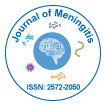Commentary: “Physicochemical Characterization and Antibacterial Activity of the Leaf oil of Crotalaria pallida Aiton”
Received: 01-Nov-2016 / Accepted Date: 02-Dec-2016 / Published Date: 08-Dec-2016
5692Commentary
Growing tide of the antibiotic resistance worldwide is still continuing [1]. It is the very high time to recall WHO declaration of 2011 “combat drug resistance: no action today, no cure tomorrow” [2]. Presently, antimicrobial resistance (AMR) possess a major threat to patient’s treatment as it leads to increased morbidity and mortality, increased hospital stay and severe economic loss to the patient and nation [3]. Thus, continuation of discovery of new antimicrobials and expansion of utility of existing antibiotics is crucial to combat the ever-increasing antimicrobial resistance [4].
Medicinal plants are now gaining popularity in treatment of bacterial infections to fight against the increasing prevalence of antibiotic resistance and to avoid the side effects of synthetic antibiotics [5]. According to WHO, about 80% of world’s population rely on herbal medicines for their primary healthcare and the worldwide annual market for herbal products is near about US$ 60 billion [6]. Plants are important source of potentially useful structures for new chemotherapeutic agents. The first step towards this goal is the in vitro antibacterial activity assay [7].
The hydrolytic products of vegetable oil are triglycerides and phospholipids, particularly the fatty acids, have antimicrobial activities. Being natural compounds they are both environmentally safe and generally harmless to the body even at the effective concentrations for killing pathogenic microbes. They are nonallergenic, fully metabolized in the body, abundant in nature and an inexpensive source of antimicrobial products.
Meningitis is an inflammation of the meningeal layers of the brain and spinal cord. The inflammatory process extends throughout the subarachnoid space of the brain and spinal cord and involves the ventricles. Bacterial meningitis is a major cause of morbidity and mortality, especially among children less than 5 years of age. The rapid progression of symptoms and potentially devastating effect of the disease necessitate early recognition and immediate treatment [8]. Increased antibiotic resistance of the concern pathogen against the commonly used antibiotics has worsened the situation [9]. In spite of appropriate antibiotic therapy, the case-fatality ratio of meningococcal disease is 10-15%. The case fatality ratio of meningococcemia is up to 40%. About 20% of survivors of meningitis patients have permanent sequela including hearing loss, neurologic damage, loss of a limb [10,11].
He searched for potent antimicrobial compound from the leaf oil of Crotalaria pallida L, a plant used folk medicine for treating urinary infections [12]. The oil was extracted by solvent extraction followed by saponification. The oil was dark green with pleasant odour. The oil content of the leaf was 8.60 ± 0.20%. Density and specific gravity of the oil was 1.356 ± 0.003 and 1.240 ± 0.002 respectively. Estimated acid value (19.63 ± 0.22) and saponification value (109.08 ± 2.87) of the oil were in favour of good quality. Mixture of fatty acid was purified by TLC. After characterization by IR, GC and GC–MS analysis of fatty acid methyl esters, nineteen fatty acids were identified. Predominating fatty acids were linolenic acid (34.06 ± 0.23%), palmitic acid (24.47 ± 0.22%), linoleic acid (13.50 ± 0.12%), oleic acid (4.60 ± 0.11%) and 7- hexadecanoic acid (1.00 ± 0.01%).
The paper of his also reported about the antibacterial activity of fatty acids against Bacillus subtilis, Escherichia coli and Acinetobacter junii having MIC 80 ± 0.58, 10 ± 0.14 and 10 ± 0.25 respectively [11]. Among these, the latter two are related to infective meningitis [8]. Intense testing for antibacterial activities of vegetable oil against causal organisms of meningitis may be taken to ensure their efficacy. To become effective antimicrobial drug, the target drug should be able to cross the blood brain barrier to reach target microorganisms. Individual fatty acid may possess antibacterial properties or effect may be synergistic [13,14]. There are ample scopes for research in this field with these antibacterial fatty acids. At present there are various drug delivery systems for transport of drug at its site of action. It is also another field of research in related to suitability of these antibacterial fatty acids against the [15,16].
He reported about the application of esters of fatty acids as adjuvant against Staphylococcus toxoid, one of the culprits for meningitis. So, there are ample scopes for experiment with these fatty acids as antibacterial substances and also as adjuvant against the infective meningitis [17].
References
- Batovska DI, Todorova IT, Tsvetkova IV, Najdensk HM (2009) Antibacterial Study of the Medium Chain Fatty Acids and Their 1-Monoglycerides: Individual Effects and Synergistic Relationships. Pol J Microbiol 58: 43-47.
Citation: Roy RN (2016) Commentary: “Physicochemical Characterization and Antibacterial Activity of the Leaf oil of Crotalaria pallida Aiton”. J Meningitis 1:110.
Copyright: © 2016 Roy RN. This is an open-access article distributed under the terms of the Creative Commons Attribution License, which permits unrestricted use, distribution, and reproduction in any medium, provided the original author and source are credited.
Share This Article
������ Journals
Article Usage
- Total views: 2593
- [From(publication date): 0-2016 - Nov 22, 2024]
- Breakdown by view type
- HTML page views: 1948
- PDF downloads: 645
